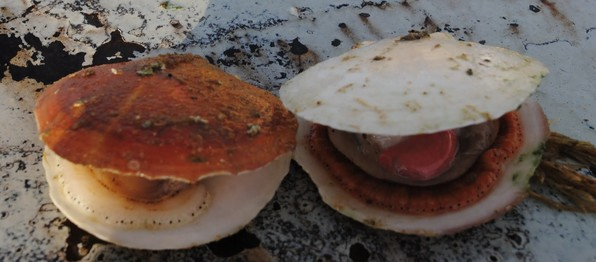WASHINGTON, DC / ACCESSWIRE / June 12, 2019 / The loss, recovery, and now electrical failure of the NOAA Northeast Fisheries Science Center "HabCam" habitat mapping camera means that the all-important 2019 Northeast sea scallop survey now continues as a dredge-only survey. The federal survey will thus conclude on June 15 without crucial sampling instruments, including cameras that photograph the ocean bottom. The HabCam, towed just above the ocean floor, provides a non-invasive, extensive, optically-based survey of the Atlantic scallop resource and ocean floor. NOAA Fisheries is working to make the HabCam a centerpiece research and survey tool.
For its part, the scallop fishery is one of the nation's most valuable and sustainable. On average, over a half billion dollars of scallops are landed each year in New England and Mid-Atlantic fishing ports. The fishery has prospered in large part due to NOAA Fisheries and scallop-industry funded cooperative research teams from universities and foundations obtaining and using real-time data and information regarding scallop growth and abundance. Federal scientists use the HabCam and a dredge survey, and the federal surveys are supplemented with cooperative dredge and optical surveys, conducted in partnership between the fishing industry and its research partners.
On June 6, the HabCam was being towed by the Research Vessel Hugh R. Sharp in the area known as the Great South Channel and hit an uncharted object in about 130 feet of water. The HabCam separated from the ship when the weak link in the tow cable broke. According to NOAA, this is "intended when tension is too great [in order to limit] damage to both the instrument and the ship's tow winch." Four days later, on June 10, commercial divers recovered the instrument. "The vehicle was inspected and minor repairs made, before deploying this morning. The HabCam initially operated as usual, but soon encountered power problems," NOAA reported.

This disruption will hamper the survey, especially in the Great South Channel, which is a vital scallop harvesting area. The optical survey is particularly important due to the presence of numerous boulders in this area, which make dredge surveys difficult or impossible. This is an area with high yield to the fishery, and one dredge survey is inadequate to determine the size of the biomass in the area.
Government researchers charter the Research Vessel Hugh R. Sharp for only a specific numbers of days each year, so any day lost has an impact. As a result of this failure, the survey will be conducted for fewer days, and we will therefore have less data to manage the scallop resource.
No matter how staunchly officials protest to the contrary, the HabCam's loss and electrical failure will impact our ability to manage the resource.
Sadly, this is the second time in just three years that the $450,000 HabCam has been lost and recovered while operating. On May 20, 2016, scientists aboard the Hugh R. Sharp research vessel were conducting scallop surveys about 75 miles southeast of Delaware Bay, between New Jersey and Delaware, when, according to NOAA, the HabCam "separated from the tow cable and the vessel" in about 80 meters of water.
Considering that this is not the first time this has happened, and bearing in mind that by the NOAA Science Center's own declaration, the weak link is inserted intentionally to limit potential damage to the instrument, it is difficult to understand why no contingency plan is in place to address a loss situation that is both predictable, and known to arise if or when the weak link does its job.
Despite the seriousness of this equipment failure to the survey's success, NOAA did not inform the public or the industry about this failure until it was directly and publicly asked about the status of the survey at this week's New England Fishery Management Council meeting, a full five days after the incident occurred. The industry stands ready to partner with the NOAA Northeast Fisheries Science Center, and asks that the science center improve its dialogue and communication with the industry and the taxpaying public.
CONTACT:
Robert Vanasse
202-333-2628
SOURCE: Fisheries Survival Fund




